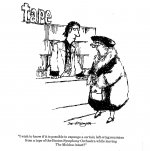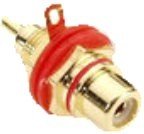Amp is still dead. I think fixing it is beyond my current capabilities. Any suggestions as to someone who may be willing to correct my errors?
Amp is still dead. I think fixing it is beyond my current capabilities. Any suggestions as to someone who may be willing to correct my errors?
Could you make the R4 measuement again and measure voltage on both sides of R4 to check if you have corrected the 10V vs 16V problem?
I you live close to another DIY member you could find out of something. There are many DIYs in US. Maybe you could exhange a beer for a fix? 🙂
Hi barefootbrewer,
Perhaps you can indicate where in the US you're located. There might be a member
close by who can help.
You mentioned in this post
http://www.diyaudio.com/forums/pass-labs/320867-aca-v1-1-illustrated-build-guide-27.html#post5406645
you have 0V at pin #1 of Q1. By that do you mean the gate (G) pin at the
left?
https://www.vishay.com/docs/91210/91210.pdf
Are you getting 0V between Gnd and where Q1 meets R6?
If so, what are you getting as voltage across R9 (ie, between Gnd and
where R9 meeting R6) and between Gnd and gate of Q4 (the point
where Q4, C3 and R10 meet)?
Thanks,
Dennis
Perhaps you can indicate where in the US you're located. There might be a member
close by who can help.
You mentioned in this post
http://www.diyaudio.com/forums/pass-labs/320867-aca-v1-1-illustrated-build-guide-27.html#post5406645
you have 0V at pin #1 of Q1. By that do you mean the gate (G) pin at the
left?
https://www.vishay.com/docs/91210/91210.pdf
Are you getting 0V between Gnd and where Q1 meets R6?
If so, what are you getting as voltage across R9 (ie, between Gnd and
where R9 meeting R6) and between Gnd and gate of Q4 (the point
where Q4, C3 and R10 meet)?
Thanks,
Dennis
heat is going to be the same , simply because Iq is set fixed in upper half
moving "bias" lower is just transferring more heat to upper mosfet
often we are using term bias as synonym for Iq , but proper use of word is addressing voltage potential , and that can be plenty of things ..... just one of them is commanding a part how much current will go through
Thank you for clarifying!
Still I would like to have it run a bit cooler if possible, could that be achieved by returning to 19v as inputvoltage from the psu?
Dan.
Thank you for clarifying!
Still I would like to have it run a bit cooler if possible, could that be achieved by returning to 19v as inputvoltage from the psu?
Dan.
Either that (going back to 19V) or alter the value of R15 (tweak, V1.1, George, etc.)... or both. Some member here presented his "own" R15 values not too long ago...
Hi barefootbrewer,
Perhaps you can indicate where in the US you're located. There might be a member
close by who can help.
You mentioned in this post
http://www.diyaudio.com/forums/pass-labs/320867-aca-v1-1-illustrated-build-guide-27.html#post5406645
you have 0V at pin #1 of Q1. By that do you mean the gate (G) pin at the
left?
https://www.vishay.com/docs/91210/91210.pdf
Are you getting 0V between Gnd and where Q1 meets R6?
If so, what are you getting as voltage across R9 (ie, between Gnd and
where R9 meeting R6) and between Gnd and gate of Q4 (the point
where Q4, C3 and R10 meet)?
Thanks,
Dennis
Thanks. I’m on the Mississippi Coast. Not too many others in the hobby nearby that I can tell.
Someone on the site volunteered to help, though. I’ve got a good feeling it’ll all work out.
Thanks guys.
Amp is still dead. I think fixing it is beyond my current capabilities.
Any suggestions as to someone who may be willing to correct my errors?
Curage Barefootbrewer don't give up.
It's not complicated to fix such amplifier.
You do continuity test from one connection point to another and look at the pcb tracks.
If find some cold joint tester do not beeep so just make fresh new soldering work :
ACA (v1.1) Illustrated Build Guide
If continuity test show all soldering joints and connection wire are OK then
problem is from not working transistors.
Other possibility is something wrong with RCA input and speakers output wires connections
on the chassis maybe ?
Have a nice day 🙂
Attachments
I agree with soundhappy. Take resistance readings at all points comparing them with the good channel, no power. With voltage readings at all points and resistance readings you should see a discrepancy between the channels. If not use beeper function on multi-meter and and continuity from input and output connectors to board. Be sure the inputs and outputs are not shorted together or to ground some way as well. Be sure mosfets are not grounded to heatsinks as well. Pull and shake every wire and see if any come loose. I just finished a PP tube build and it took me 2 weeks working everyday to find and solve the problems I created and I have many builds under my belt and lot's of equipment. Admittedly old and no where as sharp as I used to be.
Last edited:
Can you increase the voltage on this for more power, or counterproductive?
Say a 30 volt input.
Say a 30 volt input.
24 is the comfortable max.
Heat becomes a big issue, as does the voltage rating of the capacitors. Also the increase in power would be small, as we're dealing with a logarithmic scale.
The most direct way to make a genuine increase in power is run 2 as monoblocks.
Heat becomes a big issue, as does the voltage rating of the capacitors. Also the increase in power would be small, as we're dealing with a logarithmic scale.
The most direct way to make a genuine increase in power is run 2 as monoblocks.
One idea I had was to wire the new version of the kit with the power switch in the front and use the unused back switch location to place a switch that can change between mono and stereo rca (or with a three position switch mono rca/stereo rca/mono balanced). i'm new to diy and i can't seem to figure out how this might work even though i've been toying with it on paper. it might help to see the rca mono block layout, but that isn't available yet. in any case, i think it would be a very cool mod. any suggestions?
Got my preorder in yesterday. After 6l6 comments on monoblock “wow, wow,wow” I was wondering if it’s better ordering two to use as monoblocks vs just one for stereo?
Forgot to mention that my next planned build is the aleph j, I have the transistors and still collecting rest of parts. So my question is more two ACA’s or just the one and wait to build the aleph j. I am relatively new to the diy audio world. Thanks.
Just ordered two ACA kits, planning to run as balanced monoblocks.
This will be my first SS amp build project since I built - in the early 90s - a 60WPC Mosfet amp kit from Stereo Cost Cutters. Looking forward to it as something different than my normal tube amp build. Given my new smaller listening room and family friendly stereo, I'm going to give up on the ol' thermionic valve. Just don't tell my friends 😉
This will be my first SS amp build project since I built - in the early 90s - a 60WPC Mosfet amp kit from Stereo Cost Cutters. Looking forward to it as something different than my normal tube amp build. Given my new smaller listening room and family friendly stereo, I'm going to give up on the ol' thermionic valve. Just don't tell my friends 😉
Ah, but wontcha miss the rolling of rectifier, input/driver and output tubes?
I sure as frack don’t
I sure as frack don’t
Are there any good tricks when mounting the RCA connectors for the ACA?
I want the solder opening on the +pin at "12 o'clock" and the ground solder terminal at "6 o'clock". Then I want to tighten without anything moves.
The supplied RCA connectors are without a hex shape on the front. It is round so difficult to hold contra (don't want marks) when using a 12mm hex wrench turning the hex nut at the back.
And another thing. How much torque is needed?
It presses on plastic insulators but still the gnd connection has to have good electrical connection.
Was my questions understandable at all?
I think I am able to "solve it" 🙂 .....but if some has nice tricks here.....I want to know......maybe some PassLab/FirstWatt tricks.......
I want the solder opening on the +pin at "12 o'clock" and the ground solder terminal at "6 o'clock". Then I want to tighten without anything moves.
The supplied RCA connectors are without a hex shape on the front. It is round so difficult to hold contra (don't want marks) when using a 12mm hex wrench turning the hex nut at the back.
And another thing. How much torque is needed?
It presses on plastic insulators but still the gnd connection has to have good electrical connection.
Was my questions understandable at all?
I think I am able to "solve it" 🙂 .....but if some has nice tricks here.....I want to know......maybe some PassLab/FirstWatt tricks.......
No real tricks. You can align everything finger tight and slightly anti-clockwise to where you want it to end up and then as your finish it with the wrench it all rotates a bit and is perfect.
No part of the metal touches the chassis. Photos show the location of the washers/tab/nut
Torque until it's tight enough to not move.
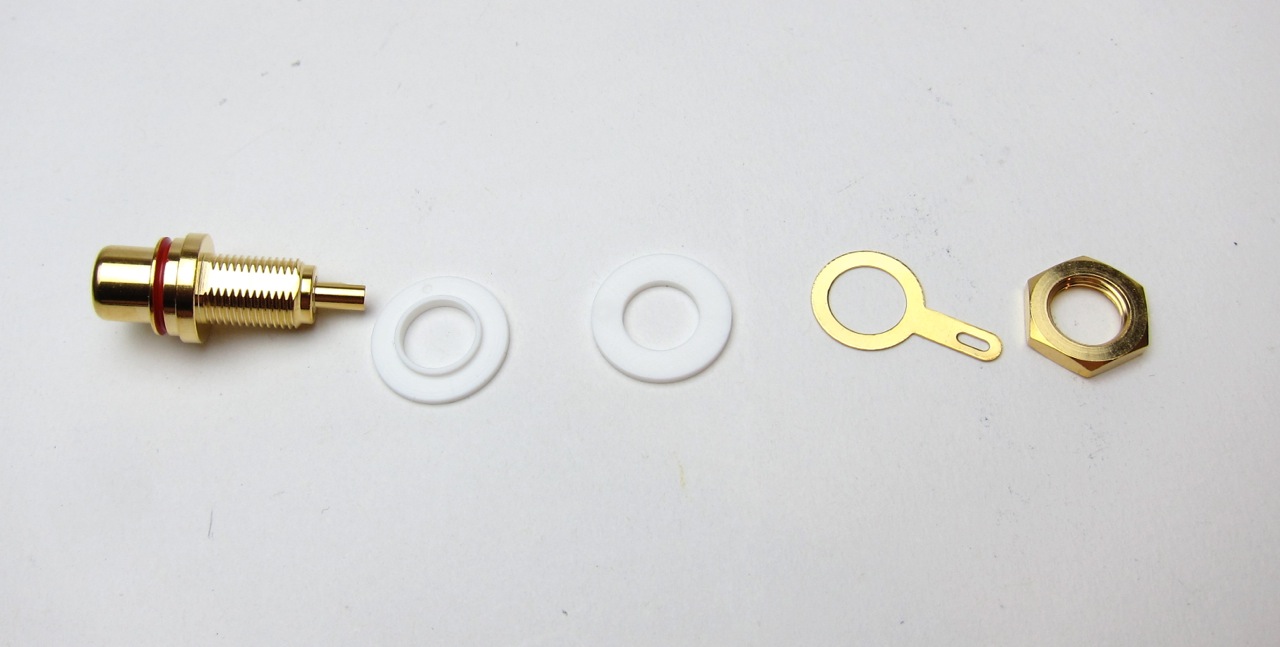
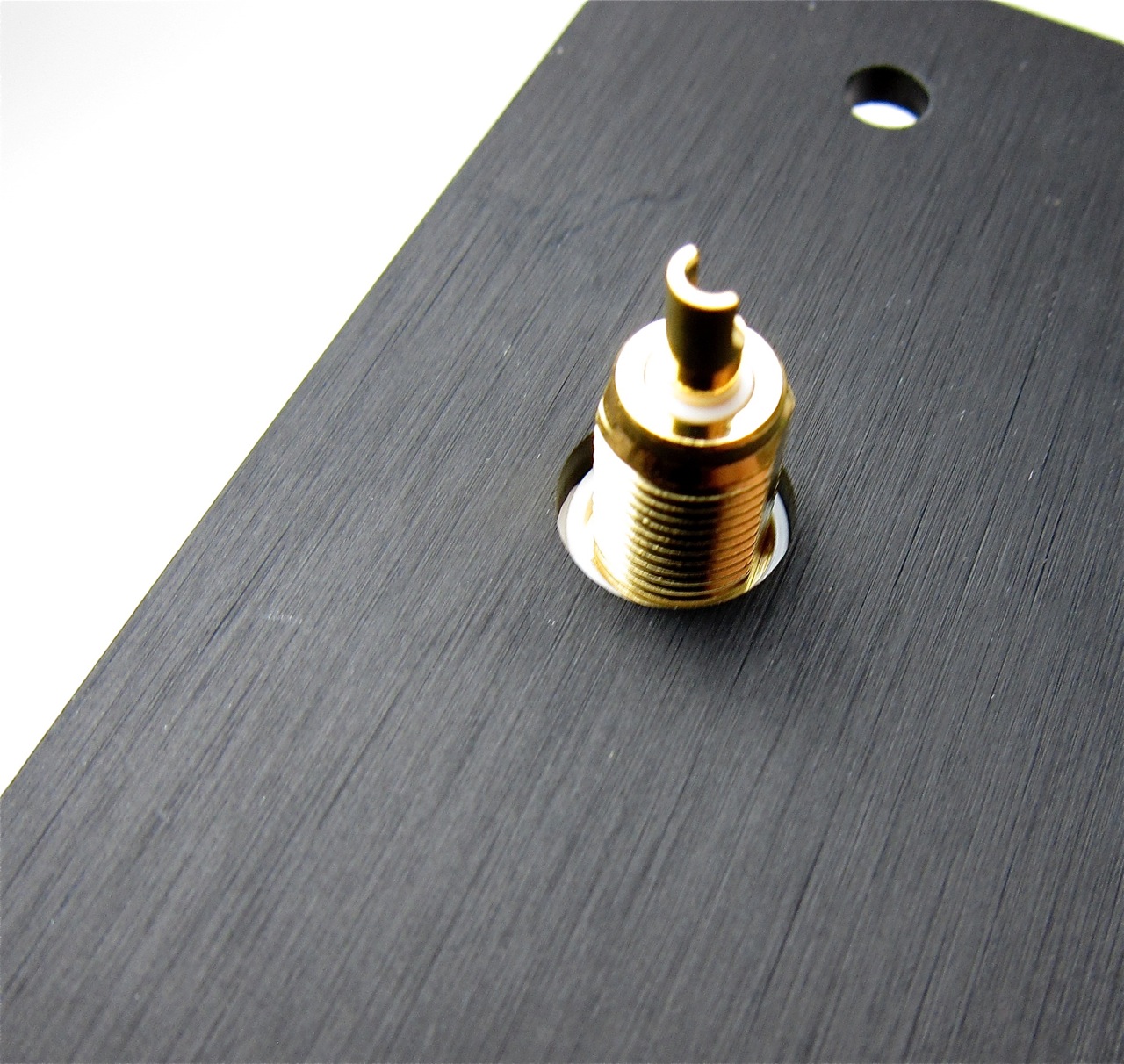
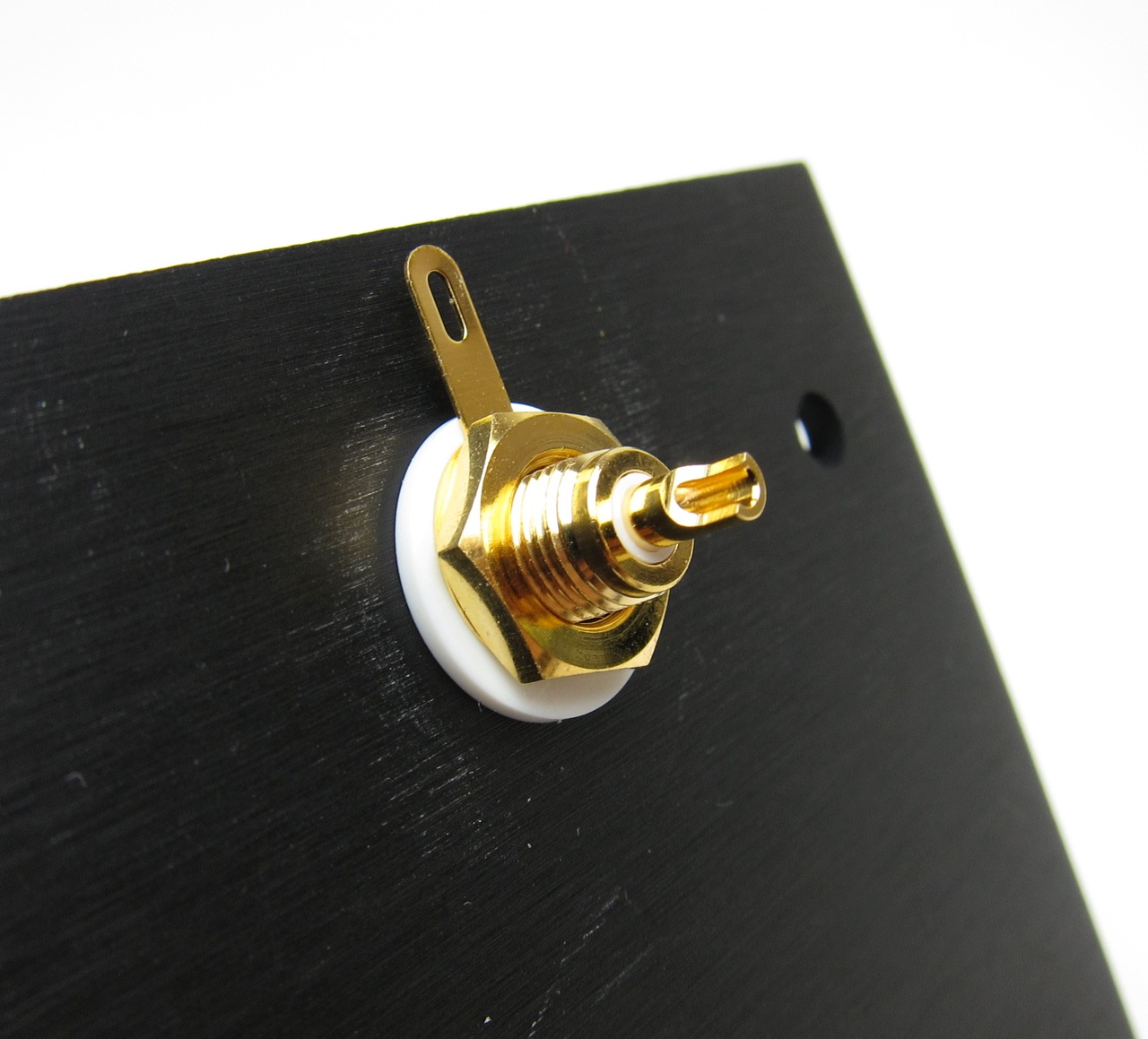
No part of the metal touches the chassis. Photos show the location of the washers/tab/nut
Torque until it's tight enough to not move.



Ok.....I know how to assemple it with the plastic insulators but you just hold contra with your fingers and then tighten as much as your finger power allows?
The picture attached shows a RCA female variant where the front has a hex shape like the nut. Using this variant you can hold contra using a wench at the front side and then get it a bit tighter. Then you have to "fiddle" a bit if you want the gnd solder connection to end up at a specific position.
My biggest concern was that it does not get tight enough in the long run for a stable gnd connection. But of course it is two gold plated surfaces against each other so maybe it is ok that it is just "finger tight".
The picture attached shows a RCA female variant where the front has a hex shape like the nut. Using this variant you can hold contra using a wench at the front side and then get it a bit tighter. Then you have to "fiddle" a bit if you want the gnd solder connection to end up at a specific position.
My biggest concern was that it does not get tight enough in the long run for a stable gnd connection. But of course it is two gold plated surfaces against each other so maybe it is ok that it is just "finger tight".
Attachments
btw when it comes to kits it would be nice if the same housing could support different iterations of the amp.
right now the braces prevent mounting the original ACA boards; and we have no idea of the boards for the upcoming iteration with a transformer (whatever that one will be called).
I have 4 channels of the original ACA and if I was to repackage them in two stereo/or bal mono housings is there a way the old heatsinks could be tied to the new front, back and top/bottom boards or the height and front-to-back hole spacings are all new for the 1.1. and there is no backwards compatibility whatsoever?
Thx.
right now the braces prevent mounting the original ACA boards; and we have no idea of the boards for the upcoming iteration with a transformer (whatever that one will be called).
I have 4 channels of the original ACA and if I was to repackage them in two stereo/or bal mono housings is there a way the old heatsinks could be tied to the new front, back and top/bottom boards or the height and front-to-back hole spacings are all new for the 1.1. and there is no backwards compatibility whatsoever?
Thx.
- Status
- Not open for further replies.
- Home
- Amplifiers
- Pass Labs
- ACA V1.5 Illustrated Build Guide
